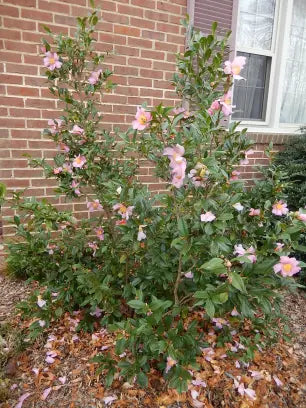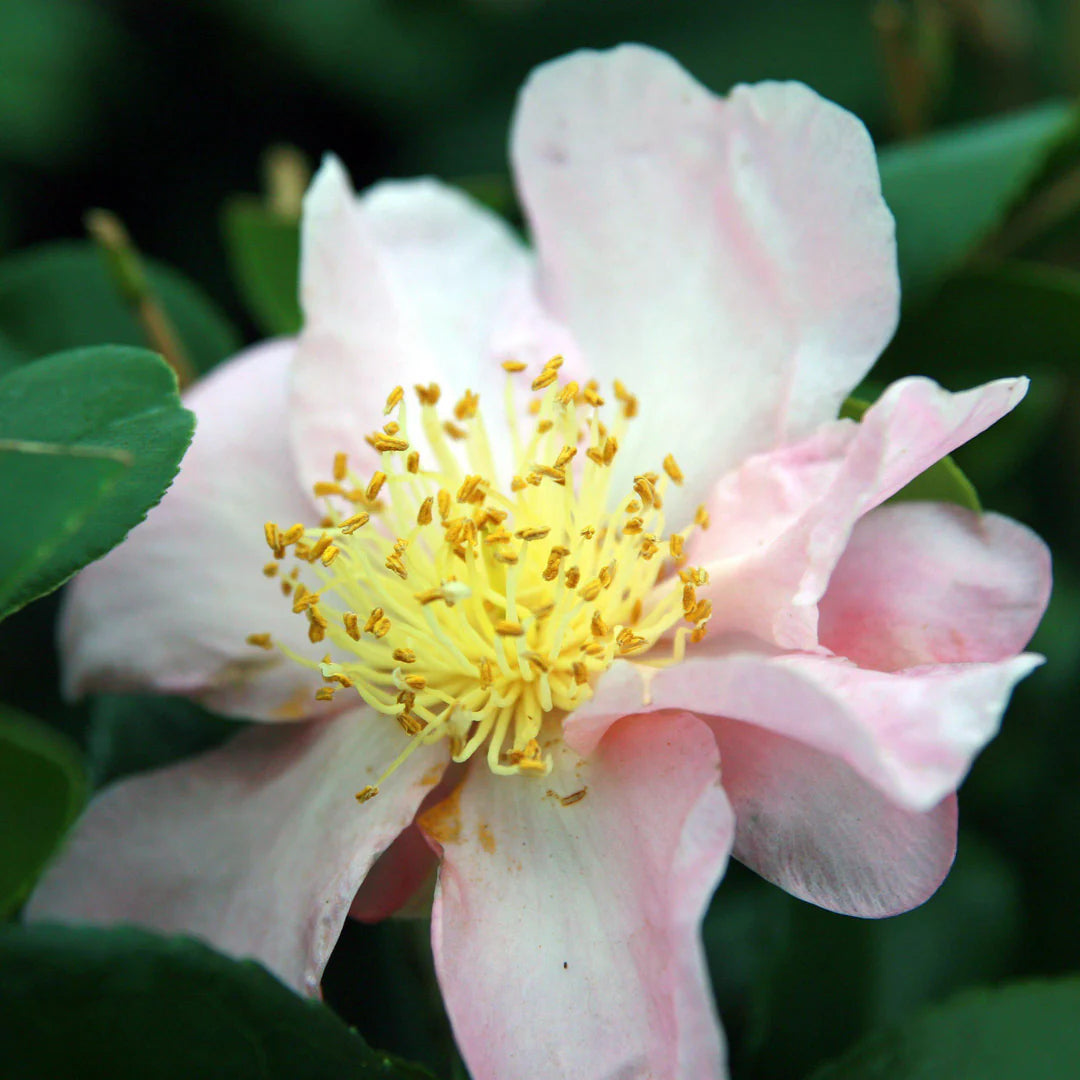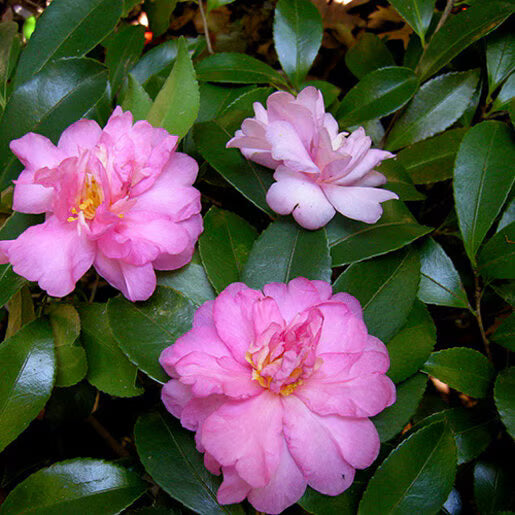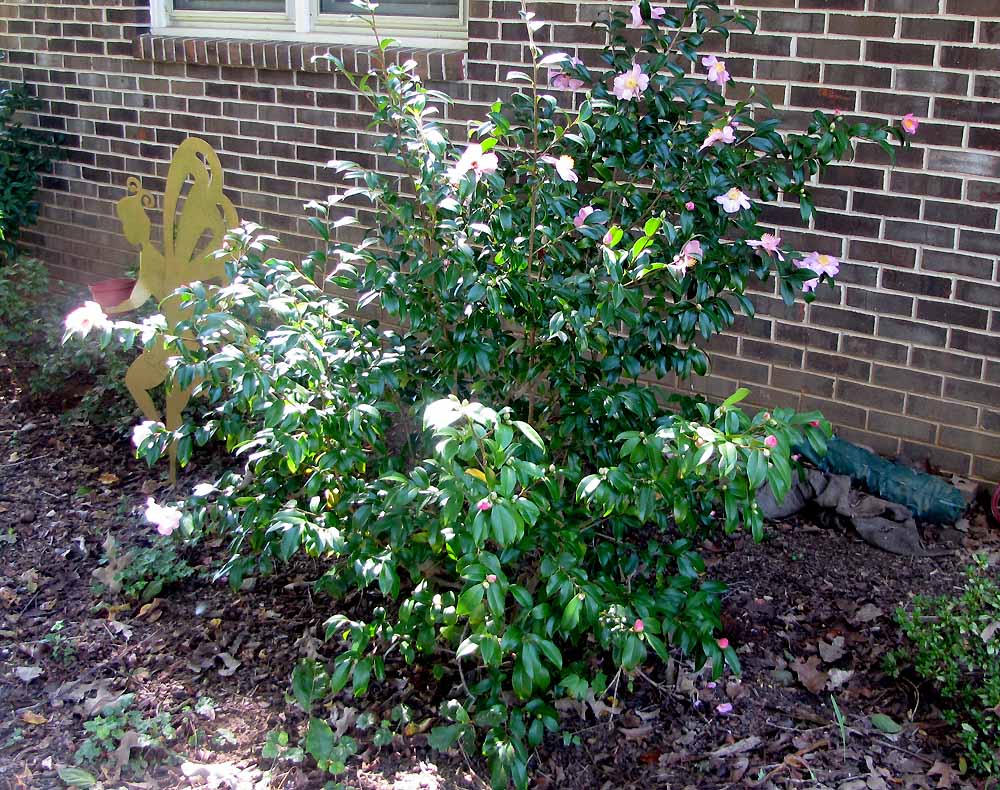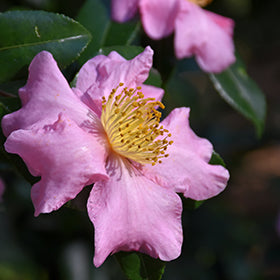My Store
Winter's Star Camellia
Winter's Star Camellia
Couldn't load pickup availability
Winter's Star Camellia - Lavender Pink Winter Blooming Shrub
Discover the enchantment of delicate lavender-pink flowers gracing your winter garden with star-like beauty. The Winter's Star Camellia is a cold-hardy, evergreen flowering shrub renowned for its unique star-shaped blooms that bring soft color and graceful charm to the winter landscape. This captivating winter bloomer has become the preferred choice for gardeners seeking distinctive flower form and reliable cold-weather performance with a romantic, cottage-garden appeal. With its elegant lavender-pink petals arranged in a charming star pattern and lustrous dark green foliage, the Winter's Star Camellia transforms barren winter gardens into whimsical displays of delicate beauty. The graceful, semi-double blooms emerge profusely from December through March, creating a soft, romantic atmosphere while maintaining dense evergreen structure year-round. Unlike traditional camellia varieties with formal, rose-like flowers, this unique cultivar provides the distinctive star-shaped blooms and cottage charm you crave during winter's bleakest months that actually becomes more enchanting as the season progresses.
Why You'll Love the Winter's Star Camellia
Distinctive Star-Shaped Blooms: The unique lavender-pink flowers with reflexed petals create a charming star effect, reaching 3–4 inches across on plants that mature at 6–8 feet tall and 4–6 feet wide, making this the perfect choice for romantic winter gardens, cottage landscapes, and mixed borders where unusual flower form creates memorable visual interest during the dormant season.
Proven Cold Hardiness: Space plants 4–6 feet apart for evergreen screening or 6–8 feet apart for focal point specimens, and they quickly establish into substantial structures with captivating winter flower displays. These cold-tolerant camellias have earned acclaim for surviving harsh winters in zone 6 and 7 gardens where most camellia varieties fail, making winter flowering finally achievable for northern gardeners.
Extended Blooming Season: Resistant to cold damage and frost injury that destroys flowers on tender camellia varieties. Once established, the Winter's Star Camellia produces continuous waves of distinctive star-shaped blooms throughout winter, with flowers that maintain their delicate beauty even through light freezes and continue opening for 3–4 months.
Effortless Sophistication: A low-maintenance landscaping choice due to its glossy evergreen foliage that stays pristine in all seasons, moderate growth rate, natural disease resistance, and excellent shade tolerance - perfect for gardeners who want unique winter flowers and year-round elegance without the intensive care requirements of finicky flowering shrubs.
Winter's Star Camellia Details
- Botanical Name: Camellia oleifera 'Winter's Star'
- Type: Broadleaf evergreen flowering shrub
- Mature Size: 6–8 ft tall × 4–6 ft wide
- Growth Rate: Moderate — 6–12 inches per year
- Light: Partial shade to full shade
- Soil: Acidic, well-drained; rich in organic matter
- Water: Moderate to high; consistent moisture preferred
- USDA Hardiness Zones: 6, 7, 8, 9
- Bloom Time: December through March
- Flower Color: Lavender-pink with star-shaped form
Growing Conditions
Soil Adaptability: Winter's Star Camellia requires acidic soil with pH ranging from 5.5–6.5, thriving in organically rich, moisture-retentive yet well-draining conditions similar to requirements for azaleas and mountain laurels. However, soil heavily amended with compost, aged pine bark, and peat moss produces the most vigorous growth and abundant flowering, and alkaline or heavy clay soil must be significantly modified with sulfur and organic matter or the plant should be grown in raised beds filled with acidic mix.
Light Requirements: Thrives in partial shade to full shade (2–6 hours of filtered or morning sunlight daily). For optimal flower production and foliage health, plant in locations with gentle morning sun and protection from hot afternoon rays, or under the dappled canopy of tall pines or hardwood trees. Shield from harsh afternoon sun and drying winter winds to prevent leaf scorch and extend flower life during the blooming period.
Hardiness: Excels in USDA zones 6–9, making it suitable for diverse climates from the Mid-Atlantic region through the Southern states and into temperate areas of the West Coast, withstanding winter temperatures as low as -10°F. This exceptional hardiness makes it one of the most reliable winter-flowering camellias for gardens in the northern portion of camellia growing zones.
Care Instructions
Watering: Water deeply 2–3 times weekly during the first two growing seasons to establish an extensive root system that supports winter bloom production. Once established, maintain consistent soil moisture year-round, especially during fall bud development and throughout the winter flowering period. Provide approximately 1–2 inches of water per week, adjusting based on rainfall and temperature. Apply 3–4 inches of acidic organic mulch such as pine bark nuggets, pine straw, or shredded oak leaves to conserve moisture, moderate soil temperature, and maintain proper pH.
Pruning: Prune lightly in early spring immediately after flowering concludes and before new growth begins. Winter's Star Camellia requires minimal pruning - simply remove spent blooms, any dead or damaged branches, and lightly shape to maintain attractive form. Avoid pruning after late spring or during summer, as this removes the developing flower buds that form on current season's growth for the next winter's spectacular display.
Fertilizing: Feed with an acid-loving plant fertilizer specially formulated for camellias, azaleas, and rhododendrons in early spring after blooming ends and again in early to midsummer to support healthy growth and flower bud formation. Consider organic options like cottonseed meal, fish emulsion, or specialized camellia fertilizer applied according to label instructions. Avoid fertilizing after mid-August, which can stimulate tender late-season growth susceptible to winter cold damage.
Landscaping Uses
Versatile Applications: Winter's Star Camellia's versatility makes it suitable for:
- Cottage & Romantic Gardens: The distinctive star-shaped lavender-pink flowers create enchanting, informal displays perfect for cottage-style landscapes and romantic garden themes
- Winter Interest Gardens: Position prominently near patios, along garden paths, or outside kitchen and living room windows where the unique blooms can be enjoyed from indoors during cold weather
- Woodland Gardens: Provide captivating winter color and year-round evergreen backbone in shaded woodland settings and naturalistic landscapes where the graceful flowers complement informal plantings
- Foundation Plantings: Soften home exteriors with evergreen elegance on shaded north and east-facing exposures, enhanced by months of delicate winter flowers
- Mixed Shrub Borders: Combine with azaleas, rhododendrons, holly, and other shade-loving evergreens for multi-season interest in acidic soil gardens
- Privacy Screens: Create medium-height evergreen hedges that offer year-round screening plus the delightful surprise of lavender-pink winter blooms
Unique Winter Garden Character: Unlike common camellia varieties with traditional rose-form flowers, the Winter's Star Camellia offers distinctive star-shaped blooms that bring whimsical charm and cottage-garden romance to winter landscapes. The soft lavender-pink color creates a gentler, more romantic mood than bold pinks or reds, while the unusual petal arrangement makes each flower a conversation piece. Combined with glossy evergreen foliage that looks attractive year-round, this camellia transforms winter from a season to endure into a season to celebrate with unique floral beauty.
Frequently Asked Questions
How far apart should I plant Winter's Star Camellia for a hedge?
For a dense evergreen hedge or privacy screen, space plants 4–5 feet apart (center to center). For specimen plantings that showcase the unique star-shaped flowers or mixed shade borders, space them 6–8 feet apart. The 4–5 foot spacing creates a continuous screen within 5–6 years while maintaining adequate air circulation to promote plant health. Proper spacing is particularly important for camellias to prevent disease and ensure good flowering.
What makes Winter's Star Camellia flowers different from other camellias?
Winter's Star Camellia features distinctive star-shaped flowers with reflexed (backward-curving) petals that create a unique appearance unlike traditional formal camellia blooms. The lavender-pink color is also softer and more romantic than the bold pinks and reds of many camellias. This semi-double form with its graceful, open shape gives the plant a cottage-garden charm rather than the formal elegance of classic rose-form camellias, making it perfect for informal and romantic landscape styles.
When does Winter's Star Camellia bloom, and is it really cold-hardy?
Winter's Star Camellia blooms from December through March, with peak flowering typically in January and February depending on your climate zone. It's genuinely cold-hardy to zone 6 (tolerating -10°F), making it one of the most winter-resilient camellia varieties available. The flowers can withstand light frosts and freezing temperatures, though severe cold snaps in the low 20s°F may temporarily damage some blooms. The plant quickly produces new flowers to replace any damaged ones, ensuring continuous winter color.
Can I grow Winter's Star Camellia in containers, or does it need to be in the ground?
Winter's Star Camellia can be successfully grown in large containers (at least 18–24 inches in diameter) using quality acidic potting mix formulated for camellias and azaleas. Container growing is an excellent option for patios, small gardens, or areas with unsuitable soil. Container plants require more frequent watering and regular fertilization during the growing season. In zones 6–7, protect containerized plants in winter by moving to a sheltered location or insulating the pot, as roots are more vulnerable to freezing in containers than in the ground.
Share
